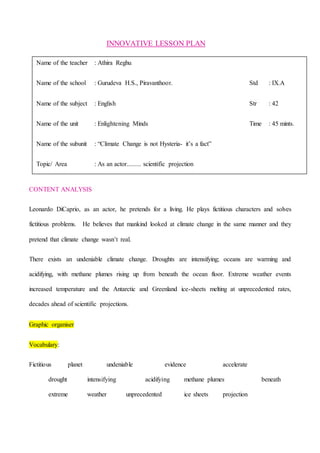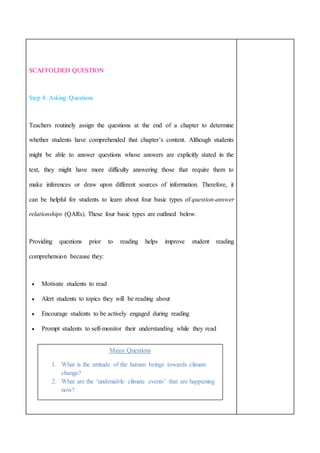This document outlines an innovative lesson plan about climate change. It begins with an introduction comparing how actors pretend in movies to how mankind has pretended climate change is not real, despite clear evidence. The document then lists intensifying droughts, ocean warming and acidification, rising methane plumes, extreme weather, and accelerating ice sheet melting as undeniable signs of climate change. The lesson plan aims to help students understand this topic through activating prior knowledge, monitoring comprehension, using a graphic organizer, asking questions, and analyzing a speech on climate change facts.












